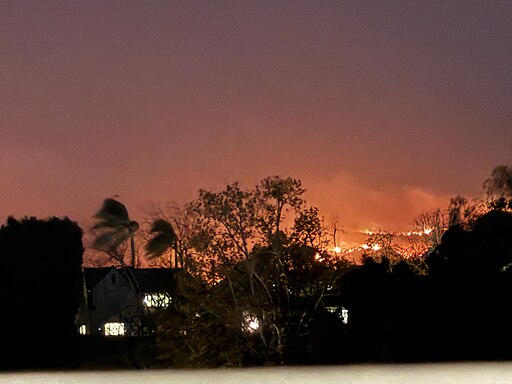11 When Community Comes Together by Brian Gray
When the wildfires broke out miles away, we weren’t in immediate danger, but we felt their impact in ways never expected.
The air turned thick with smoke, the sun was an eerie red, and stepping outside felt like walking into a furnace. Ash settled onto cars, windowsills, and sidewalks. It was a strange, unsettling feeling knowing that while our homes were safe, people not far from us were losing everything.
At first it felt surreal. The fires were happening somewhere else, but the evidence of their destruction was right in front of us. Schools canceled outdoor activities, and people were wearing masks again, not for a pandemic this time, but just to breathe. My chest felt tight, and my eyes stung. The simple act of going outside became a risk.
Beyond the physical discomfort, there was this weight, an awareness that entire communities were burning, that families had nowhere to go. Emotionally, I felt a mix of helplessness and urgency. I couldn’t stop the fires, but I could do something. So could my community.
Almost immediately people started organizing. Someone put out a call to fill U-Hauls with supplies, and within hours, donations of clothes, blankets, toiletries, and non-perishable food items poured in. I’ll never forget standing in a parking lot with strangers loading boxes into trucks, each of us driven by the same question: how can we help?

Local businesses pitched in, offering free meals and spaces to coordinate efforts. Schools became drop-off sites, and people opened their homes to evacuees. We were a city removed from the flames, but we felt the disaster deeply. And instead of just watching it happen, we acted.
Before the imminence to us, these wildfires felt like a distant problem, something that happened in a forest in some small faraway town, something that didn’t really touch the city. But nature doesn’t recognize boundaries; fire, smoke, and climate disasters don’t stay in one place.
Whether a few or hundreds of miles away, a fire can change the air we breathe, the way we live, and the way we come together. Breathing in that smoke every day and seeing the way it turned our world gray, I realized just how connected we all are. Connection and preparedness matter in times of disaster. I had never thought about evacuation plans or emergency kits before this fire, but this crisis highlighted something deeper: the necessity of community.
Community is more than just proximity. It’s about stepping up when others are suffering even if their pain isn’t our pain. We all did our parts to carry each other through the devastating fires earlier this year. Resilience isn’t just about enduring hardships but choosing to help others through theirs.
These are the lessons my wife’s firsthand experience taught us from the devastating wildfires that swept through Los Angeles County.
Media Attributions
- 512px-Palisades_Fire_from_UCLA_0668 is licensed under a CC BY (Attribution) license
